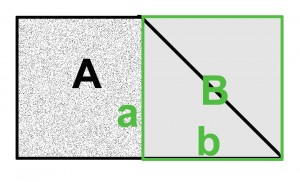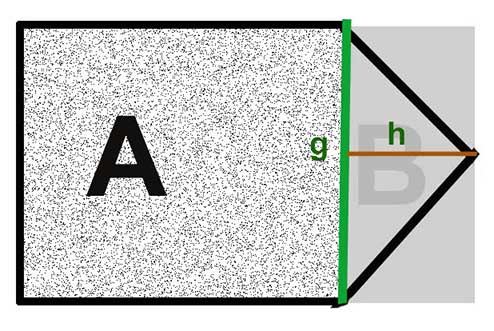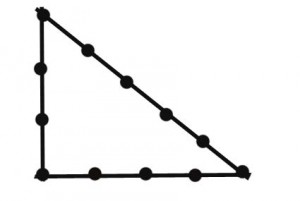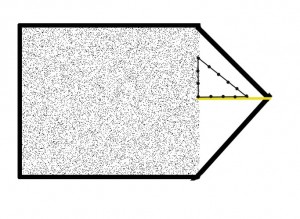Measure the garden
Who has a rectangular garden, he has it pretty easy with measuring. He simply measures the length and width of his property. This not only gives him the side dimensions, but when you multiply both sides, then you get the area, that you can work on as a gardener:
The following applies to a relatively evenly square plot of land:
Long x width = total area
Why do you actually need the total area?
Who wants to create a real garden plan, he should do it to scale. Do you want to save yourself this work for reasons of time or convenience?, then you will quickly notice, that this is not a good solution. A reasonable plan cannot be drawn up with information such as “roughly”. With a new- or remodeling a garden, it is also very helpful, because you divide the property into individual grids. Of course, that's only possible, if you have determined the exact dimensions beforehand.
But what are they doing, who want to measure an irregular garden?
With a plot of land, that does not have a regular square shape, one can make do with parts.
Die L-Form
You simply divide an L-shaped garden into two squares and calculate each one for yourself. Then the areas are added up and you have precise information here as well.

More irregular shapes
To make your work and arithmetic easier, one should try to find a kind of regularity in all irregular dimensions, which can then be easily calculated. A garden with a point could be measured like this:


Total area = area A plus halved area B
If this example doesn't fit either, then you can try to divide the garden into further calculable parts.

Pythagoras no thanks?
Who asked at school, why he should need the Pythagorean theorem and the like in life, he will get the answer at the latest with such a property.

One side is measured here (g) the area to be calculated and, based on this, at a right angle a distance to the top of the garden (h). Now all that's missing is the formula for the area of a triangle. It says: A= ½ g x h.

That means for this case: The area of the top of the garden is calculated as follows:
Length of the base times the height of the triangle (right angle to the tip) divided by two
Sounds complicated - but it's not that bad.
But how do you make a right angle??
To construct a right angle in the garden, just needs a longer cord. In this case, at intervals of 1 Meter markings attached. Overall you need 13 node. Node number 1 forms the beginning. It is stuck in the ground with a large nail. Now you tension the cord like this, that you get a triangle, which is the edge lengths of 3, 4 and 5 Meters (so node distances) hat. Node number 13 comes down to the exact number 1. The right angle is created between the two shorter sides of the triangle. Incidentally, this is the Pythagorean theorem in practical application.

